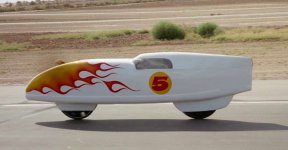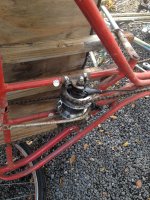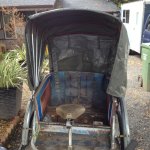thorjorbin
10 µW
Hi there!
I am looking for advice or ideas about how to create a converted electric Indian Bicycle rickshaw that runs on a 250 Watt or lower motor. I am working for a company considering launching an electric bicycle rickshaw race.
Ideally, we want a solution where we retro-fit a traditional Indian 3-wheeler bicycle rickshaw with a conversion kit (attached a picture of the bike we want to convert). I have attached a picture of what kind of bicycle rickshaw we're thinking of. The bicycle rickshaws needs to carry minimum 2 people excl. luggage and bike ( so approx. 180-210 kg total), ideally have a range of 50km per charge and a speed of maximum 25 km/h. The batteries should be rechargeable and changeable. It is quite important that the motor is below 250 watt, which we know is quite a challenge. The terrain is fairly flat, but small hills will occur, I am especially looking for advice on how to get around the challenge of having such a small motor provide a strong enough support without overheating
I reached out to GRIN Technologies/ebikes.ca, who said that their Bafang and Shengyi could provide the speed with an adjustable controller, but that they would overload fairly quickly with the load (and backed this up with their cool simulator, linked below). They suggested that I reach out to you geniuses, and tried to get your input!
Hope someone out there is able to help
Thor
I am looking for advice or ideas about how to create a converted electric Indian Bicycle rickshaw that runs on a 250 Watt or lower motor. I am working for a company considering launching an electric bicycle rickshaw race.
Ideally, we want a solution where we retro-fit a traditional Indian 3-wheeler bicycle rickshaw with a conversion kit (attached a picture of the bike we want to convert). I have attached a picture of what kind of bicycle rickshaw we're thinking of. The bicycle rickshaws needs to carry minimum 2 people excl. luggage and bike ( so approx. 180-210 kg total), ideally have a range of 50km per charge and a speed of maximum 25 km/h. The batteries should be rechargeable and changeable. It is quite important that the motor is below 250 watt, which we know is quite a challenge. The terrain is fairly flat, but small hills will occur, I am especially looking for advice on how to get around the challenge of having such a small motor provide a strong enough support without overheating
I reached out to GRIN Technologies/ebikes.ca, who said that their Bafang and Shengyi could provide the speed with an adjustable controller, but that they would overload fairly quickly with the load (and backed this up with their cool simulator, linked below). They suggested that I reach out to you geniuses, and tried to get your input!
Hope someone out there is able to help
Thor






